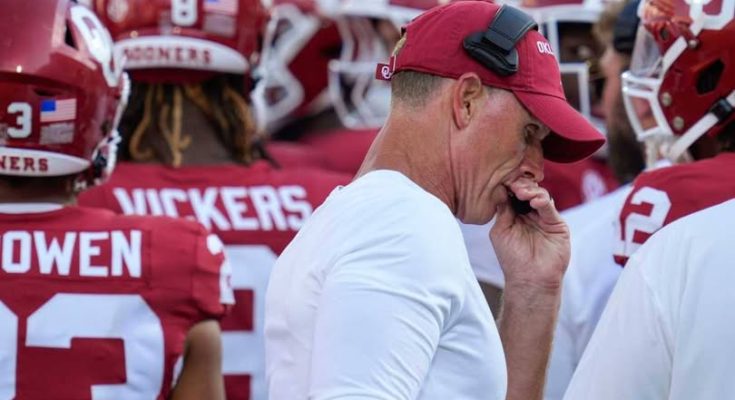Could the $140 Million in Cotton Bowl Renovations for the 2025 Texas‑Oklahoma Game Finally Put an End to Fans’ Nightmare Experiences?
For decades, the annual Texas-Oklahoma football showdown—affectionately known as the Red River Rivalry—has stood as one of college football’s most iconic spectacles. Held in the Cotton Bowl in Dallas, the neutral-site game splits the stadium down the 50-yard line, drenches the stands in burnt orange and crimson, and delivers a unique intensity that few rivalries can match. However, as legendary as the on-field product has been, the game-day experience for fans has become increasingly frustrating and outdated. Complaints about poor seating, crumbling infrastructure, inadequate concessions, and dated facilities have plagued the venue for years.
Now, that could finally be changing.
A $140 million renovation project is underway to modernize the historic Cotton Bowl Stadium ahead of the 2025 Texas-Oklahoma game. It’s a bold and long-overdue commitment to bring one of college football’s most hallowed traditions into the 21st century. But with such a hefty investment on the table, the big question remains: Will it be enough to finally fix the fan experience—or is it simply too late to salvage the Cotton Bowl’s standing as a premier venue?
To understand the stakes, it’s important to recognize what the Cotton Bowl has meant—not just to the Texas-OU rivalry, but to the culture of college football. Built in 1930, the stadium has hosted everything from Heisman winners to State Fair classics. Its weathered brick walls and open bowl seating harken back to a different era of the sport. There’s no dome, no luxury suites ringing the field, no retractable roof—just football in its purest, grittiest form.
That grit, while charming in theory, has become a point of contention for many fans who’ve had to endure long bathroom lines, broken seats, crowded concourses, and concessions that couldn’t keep up with demand. Year after year, attendees from both sides have voiced their frustration, questioning why such a massive event, one with television deals and tens of millions in economic impact, was still being held in a stadium that often felt more like a relic than a revered cathedral of sport.
City officials, the Texas State Fair Association, and the universities involved have all felt the pressure. So when the $140 million renovation plan was greenlit, it was widely seen as a make-or-break moment not just for the Cotton Bowl, but for the future of the Red River Rivalry as a neutral-site fixture.
The upgrades, according to city and Fair Park officials, are ambitious. Plans include a complete overhaul of the restrooms and concession areas, replacement of thousands of aging seats, improvements to ADA accessibility, Wi-Fi and technology enhancements, updated video boards, modern lighting systems, and expanded concourse space to reduce congestion. Perhaps most critically, structural repairs to the aging foundation and support systems will ensure the stadium can remain safe and functional for future generations.
For many fans, particularly older generations who grew up attending the game with family, the preservation of the Cotton Bowl is a matter of tradition. To them, the soul of the Red River Rivalry resides in those same bricks and benches that others might find inconvenient. The split stadium, the proximity to the State Fair of Texas, the smell of corndogs and cotton candy in the air—it’s all part of the magic. But that magic can’t hide the deteriorating conditions forever. Without change, even the most nostalgic fans had started to admit that something had to give.
The renovation is being funded through a mixture of city contributions, private donations, and future revenues from events held at the stadium, including not just Texas-OU, but other marquee football games, concerts, and cultural events. It’s a significant gamble, especially at a time when modern stadiums like AT&T Stadium in Arlington offer climate-controlled luxury, massive video screens, and pristine facilities. In fact, there had been growing calls to move the Red River Rivalry to AT&T entirely—a move that would offer convenience, yes, but at the cost of tradition.
That threat may have played a role in finally pushing the Cotton Bowl renovation over the line. Texas and Oklahoma, despite their rivalries on the field, were united in their desire to keep the game where it belonged—as a cultural anchor during the State Fair of Texas, and in the heart of a stadium that had housed so much history.
The renovations, which began in early 2024 and are scheduled for completion ahead of the October 2025 matchup, are being closely watched by fans and stakeholders alike. For some, it’s a test of whether aging stadiums can be modernized without losing their character. For others, it’s a last-ditch effort to avoid losing the neutral-site tradition altogether.
But what do fans want, really?
Surveys and interviews conducted among game attendees in recent years reveal a clear picture. Fans are not asking for luxury boxes or five-star cuisine. They want working bathrooms. They want to be able to move through the concourse without feeling like cattle in a chute. They want beer lines that don’t take 45 minutes. They want seating that doesn’t require standing for four quarters because the person in front of them has nowhere else to go. Above all, they want a game-day experience that reflects the importance of the rivalry on the field.
If the renovation plan delivers on these expectations, the payoff could be enormous. Not just in terms of fan satisfaction, but in revitalizing the broader economic ecosystem around the Cotton Bowl and Fair Park. Hotels, restaurants, vendors, and local businesses rely heavily on the annual surge of tourism brought by the Red River Rivalry. A better fan experience means more people willing to come back year after year—and more goodwill for the stadium to attract other major events.
Still, not everyone is convinced. Critics argue that $140 million may not be enough to address the foundational problems facing a nearly 100-year-old venue. Some fear that cosmetic fixes could leave deeper structural issues unresolved, or that the stadium’s lack of a roof and air conditioning could continue to pose challenges during hot or rainy game days. Others have questioned whether the project’s timeline will be met in time for the 2025 game, and if construction delays or rushed installations could backfire.
Moreover, college football itself is evolving rapidly. With Texas and Oklahoma now part of the SEC, future scheduling formats and television rights deals could reshape how and where major games are played. Will neutral-site rivalries remain viable in an era increasingly defined by media revenue and playoff access? Could the Red River Rivalry eventually be moved to a home-and-home format? If the Cotton Bowl fails to deliver a vastly improved experience, these once-hypothetical questions could gain new relevance.
But for now, optimism cautiously prevails.
Renderings of the proposed upgrades have been released, and initial construction progress appears on schedule. Fan engagement forums have been held to gather feedback on the changes, and both university administrations have expressed public support for the project. Texas head coach Steve Sarkisian and Oklahoma’s Brent Venables have both spoken about the importance of keeping the game where it is, while improving conditions for players and fans alike.
There’s a sense of hope that this renovation won’t just polish the exterior, but will reestablish the Cotton Bowl as a proud centerpiece of college football tradition. That fans who once swore they’d never return will buy tickets again. That the game-day headaches—traffic, bathrooms, crowded walkways—will finally be replaced with comfort, efficiency, and enjoyment.
The 2025 Red River Rivalry will be the proving ground.
If successful, it could serve as a model for how historic venues can evolve without losing their identity. If it fails, it could mark the beginning of the end for one of the sport’s greatest traditions at one of its most iconic locations.
One thing is certain: with $140 million on the line, the Cotton Bowl’s time to deliver is now.
Fans are no longer asking for perfection. They’re asking for dignity. For basic functionality. For an experience worthy of the passion they bring every October. If the Cotton Bowl can finally meet them there, the nightmare may finally end—and a new chapter of unforgettable memories can begin.



